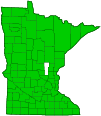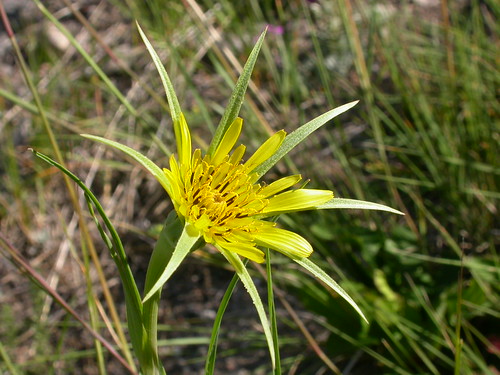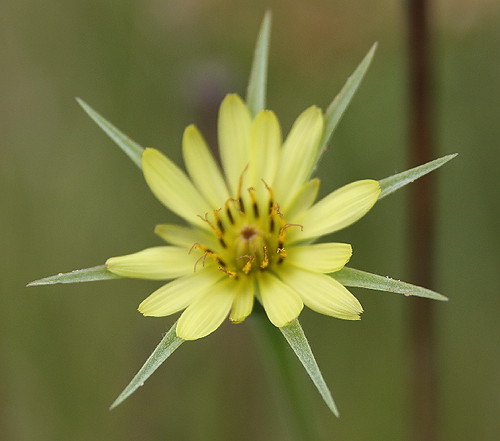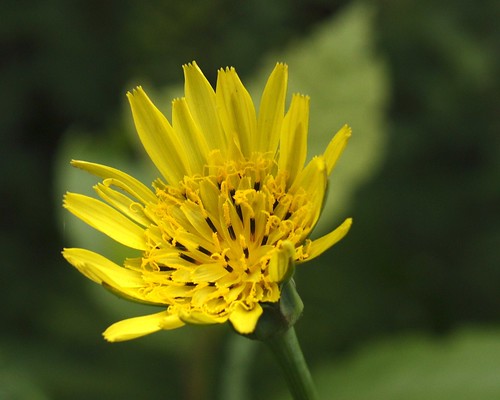yellow goat’s beard
(Tragopogon dubius)
Conservation • Description • Habitat • Ecology • Use • Distribution • Taxonomy
Conservation Status |
|
|||||||
| IUCN Red List | not listed |
|||||||
| NatureServe | NNA - Not applicable SNA - Not applicable |
|||||||
| Minnesota | not listed |
|||||||
Description |
||
Yellow goat’s beard is a 1′ to 3′ tall, erect, biennial forb that rises on one or more stems from a fleshy taproot. In its first year it shows only a rosette of basal leaves. In the second year it sends up one or more sparingly branched, sparsely-leaved stems that terminate in a single flowering stalk with a solitary flower head. The stems and leaves are grayish-green or bluish-green and exude a milky sap when broken. The grass-like leaves are alternate, clasping, untoothed, and between linear and lanceolate in shape. They get up to 12″ long and ¾″ wide, though most are closer to ¼″ wide. They taper evenly from the base to the tip. They do not bend backward, even at the tip. Young leaves have tufts of long, soft, tangled hairs. Older leaves become almost hairless except at the leaf axils. The leaf surface is fine, not rough. The inflorescence is a solitary flower head, 1½″ to 2″ wide, at the end on a long, leafless flower stalk. The flower stalk is hollow and is swollen just below the flower head. The flower head has many pale yellow outer ray florets about 1″ long. There are 13 bracts at the base of the flower head that extend well beyond the outer margin of the rays. There may be only 8 bracts on smaller plants and on later heads. The flower heads open in the morning and are closed by the afternoon. The fruiting head is a whitish, spherical pappus, about 3″ in diameter, resembling a large dandelion. |
||
Height |
||
12″ to 36″ |
||
Flower Color |
||
Pale lemon yellow |
||
Similar Species |
||
Meadow salsify (Tragopogon pratensis) leaves are curved backward or coiled. The peduncle is not inflated at the tip when the plant is in flower. There are usually 8, occasionally 12, bracts. The bracts do not extend beyond the ray florets. The ray florets are lemon yellow or bright yellow. It is found in moister habitats. |
||
Habitat |
||
Dry. Roadsides, disturbed sites. Full sun. |
||
Ecology |
||
Flowering |
||
May to July |
||
Pests and Diseases |
||
|
||
Use |
||
|
||
Distribution |
||||
|
Sources |
|||
| 5/12/2023 | ||||
Nativity |
||||
Native to western Asia and to Europe. Introduced and naturalized in North America. |
||||
Occurrence |
||||
Common |
||||
Taxonomy |
|||
| Kingdom | Plantae (Plants) | ||
| Division | Tracheophyta (Vascular Plants) | ||
| Subdivision | Spermatophytina (Seed Plants) | ||
| Class | Magnoliopsida (Dicots) | ||
Order |
Asterales (Sunflowers, Bellflowers, Fanflowers, and Allies) | ||
Family |
Asteraceae (Sunflowers, Daisies, Asters, and Allies) | ||
| Subfamily | Cichorioideae (chicories, dandelions, and allies) | ||
| Tribe | Cichorieae (lettuce, chicory, dandelion, and salsify) | ||
| Subtribe | Scorzonerinae | ||
| Genus | Tragopogon (salsifies) | ||
Subordinate Taxa |
|||
|
|||
Synonyms |
|||
Tragopogon dubius ssp. major Tragopogon major |
|||
Common Names |
|||
common salsify fistulous goat’s-beard goat’s beard goatsbeard greater sand goat’s-beard meadow goat’s-beard salsify western goat’s beard western salsify wild oysterplant yellow goat’s beard yellow salsify |
|||
Glossary
Bract
Modified leaf at the base of a flower stalk, flower cluster, or inflorescence.
Clasping
Describing a leaf that wholly or partly surrounds the stem but does not fuse at the base.
Lanceolate
Lance-shaped; much longer than wide, thickest toward the base, and gradually tapering toward the tip.
Linear
Long, straight, and narrow, with more or less parallel sides, like a blade of grass.
Pappus
The modified calyx composed of awns, scales, bristles, or feather-like hairs in plants of the Aster family such as thistles and dandelions.
Visitor Photos |
|||||
Share your photo of this plant. |
|||||
| This button not working for you? Simply email us at info@MinnesotaSeasons.com. Attach one or more photos and, if you like, a caption. |
|||||
Bill Reynolds |
|||||
 |
|||||
MinnesotaSeasons.com Photos |
|||||
Plant |
|||||
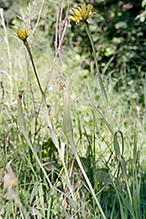 |
 |
||||
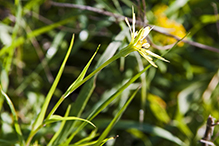 |
|||||
Flower Head with 8 Bracts |
|||||
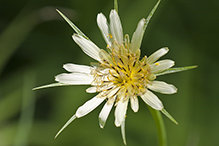 |
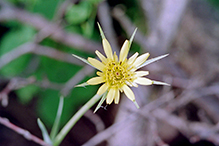 |
||||
 |
 |
||||
Flower Head with 13 Bracts |
|||||
 |
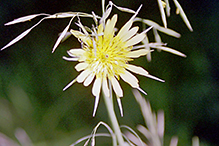 |
||||
 |
|||||
Fruiting Head |
|||||
 |
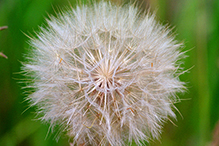 |
||||
 |
|||||
Young Plant |
|||||
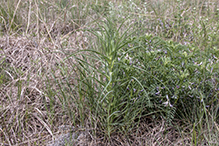 |
 |
||||
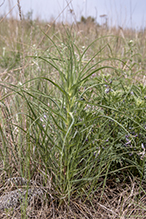 |
|||||


Visitor Videos |
|||
Share your video of this plant. |
|||
| This button not working for you? Simply email us at info@MinnesotaSeasons.com. Attach a video, a YouTube link, or a cloud storage link. |
|||
Other Videos |
|||
| The perfect parachute AdvancedConcepts |
|||
About
Published on Jun 7, 2013 Dispersal of seeds away from the parental plant is very important for diffusion and plants invest resources in a variety of structures specialized for this task. Wind dispersal is a particularly common strategy; many species rely on winged or plumed seeds to increase the efficiency of dispersal. The dispersal distance of a wind-dispersed seed is influenced by wind speed, the height at which the fruit is released, and the rate at which the seed falls to the ground. For this reason many plants evolved structures which decrease the terminal velocity of their seeds so that seeds can be spread out further. |
|||
| Yellow Salsify (Tragopogon dubius) ~ Introduced Species Wandering Sole TV |
|||
About
Published on Jul 19, 2013 Yellow Salsify (Tragopogon dubius), a member of the sunflower family, is an introduced species to North America, originating in Central Europe and Western Asia. It goes by wide variety of other names including western salsify, western goat's-beard, wild oysterplant, yellow goat's beard, goat's beard, goatsbeard, common salsify, and salsify. It now grows throughout the majority of the United States and Canada. |
|||
| Western Salsify / Tragopogon dubius momentaryvitality |
|||
About
Published on Nov 19, 2013 Cricket Sounds from "The Sounds of Nature Collection": |
|||


|
Created: Last Updated: © MinnesotaSeasons.com. All rights reserved. |
